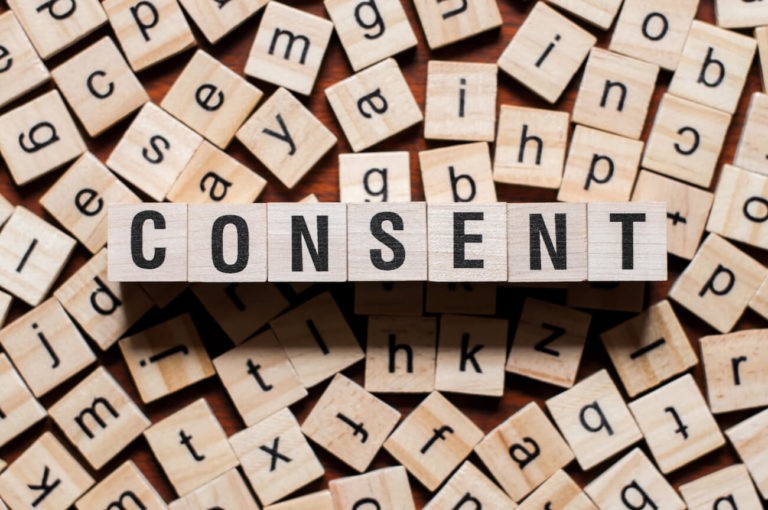As an educator with 15 years of urban experience, I learned early in my career to be acutely aware that statistically, 25% of students in my classes were suffering child abuse. Rarely did a child actually confide in me about their abuse, and it still haunts me. If I had known then what I know now about teaching about consent, perhaps fewer students would have suffered. A report of child abuse is made every 10 seconds (childhelp.org). Teaching kids about consent at an early age is one of the best preventative measures against child abuse. The question is, when is the best time to begin preparing our children in and out of school?
An article from Prevent Child Abuse Vermont states “In the past, science has thought that children needed to be about 10 years old to learn the concept of consent (telling others what kinds of touch we like or do not like and respecting other’s feelings about touch). But brain science has revealed that these concepts are best learned early, even as toddlers.” The article goes on to say that consent—communicating and respecting boundaries—is largely related to empathy, which is developed in the same part of the brain as reading and speaking, which are learned long before a child turns 10 years old.
Our next question is, how do we teach consent in age-appropriate terms? KidPower International gives this specific advice about teaching kids consent: “To have healthy relationships, you need to have good boundaries. To have clear boundaries, you need to have an understanding about what behavior is safe and what is not safe, appropriate, and respectful – both emotionally and physically — to ensure positive consent.”
They define positive consent as “making sure that each person has the choice to participate, and how they participate. Positive consent skills are about being able to communicate clearly with others about your boundaries on touch, teasing, and play – and staying aware and respectful of the boundaries of others.” We as adults can ask children for their permission before hugging or kissing them. It is important for children to know that they have control and power over who touches them and when. We can teach children to express themselves confidently by saying “yes” and “no” when they want to be touched. This empowerment at a young age sets a precedent and standard for children as they grow older. Toddlers should learn about boundaries with people they know first. KidPower has four simple principles to teach children at a young age:
- We each belong to ourselves
- Some things are not a choice
- Problems should not be secrets
- Keep telling until you get the help you need
These principles let kids know that they have a right to protect themselves in situations that they do not feel safe and that they should confide in adults, not hiding anything even if another adult tells them to keep a secret. I can appreciate that they include that some things are not a choice such as chores, baths/personal hygiene, and going to the doctor.
Even at four years of age, we can begin to model for children how to ask permission. It is common for parents to teach their children to ask permission of an owner before petting a dog they run into on the street, at the park, or at someone else’s home. Taking this one step further and teaching children to apply the same concept to other humans is a great way to begin introducing consent at a young age. This teaches children to respect and empathize with others and can be transferred to other issues as they grow. Prevent Child Abuse Vermont also states that “Research indicates that a child’s ability to empathize as a 4-year-old relates to how they treat others at age 20. This means that what very young children learn about consent will form their personalities into their adulthood and improve their relationships as a teenager and as an adult.”
KidPower also has a Consent Checklist that they promote. “The Kidpower Safety Rules are that touch, teasing, or play for fun or affection should be:”
- Safe so that no one gets hurt
- OK with Each Person so that each person says “yes”. We need to notice when people change their minds or start to say “No” with their bodies or words. We need to remember that people who are scared, sick, over-tired, drunk, or otherwise impaired cannot say, “Yes.”
- Allowed by the Adults in Charge – talking about or staring at people’s bodies or making gestures or noises about how they look is not allowed because it usually makes the other person uncomfortable
- Not a Secret so Others Can Know, because abusive behavior thrives in secrecy
I mentioned at the beginning of this article that I have regrets about not speaking to my students, especially as pre-teens, about consent when I was their teacher. I also can’t say for sure that this practice has changed to include teaching consent to kids in school yet. It seems that this would be a lesson for a counselor to teach, or something to be taught in health class or social-emotional learning, yet many states do not include this as a mandated curriculum topic. Abuse prevention is crucial for the health and safety of every child, but adult awareness is key to the implementation of abuse prevention. It is my hope that this article stirs an awareness in you as an educator, no matter your experience or position. Please check out KidPower.org for more information on teaching teens about consent, as well.




